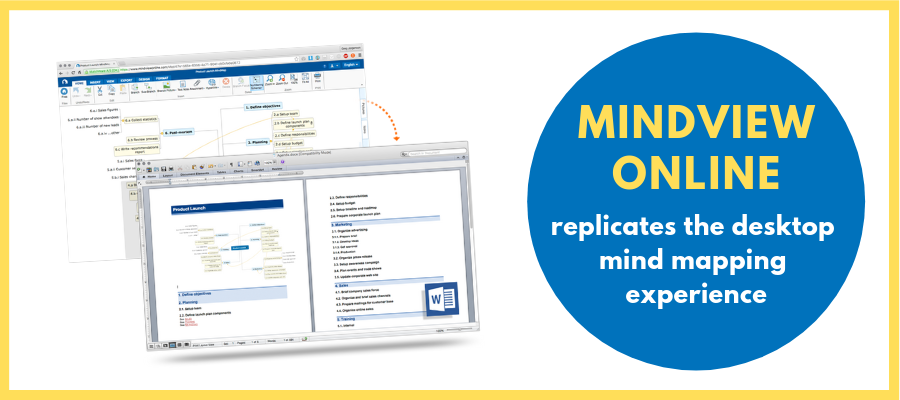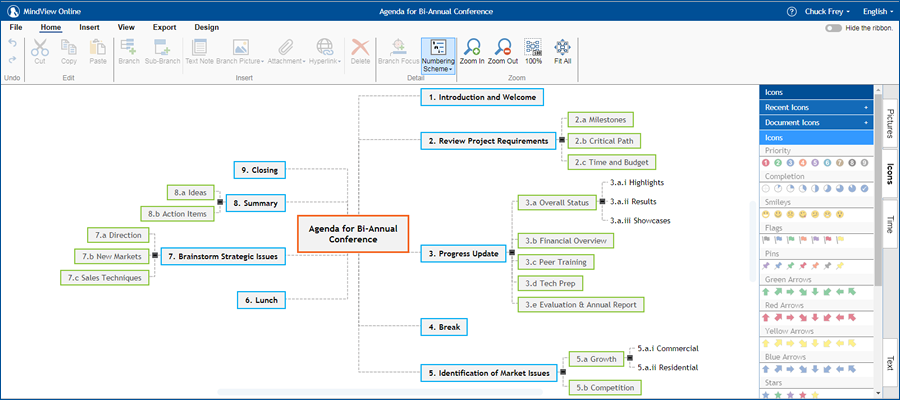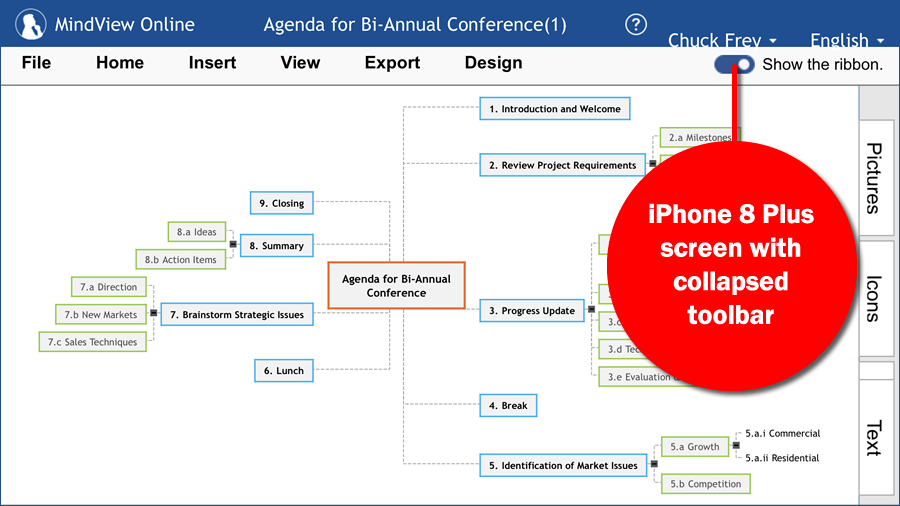During the last year or two, web technology has advanced to the point where the web versions of popular productivity software look and operate exactly like it’s desktop counterparts. A case in point is Microsoft’s Office 365. Another notable example in the mind mapping space is MindView Online, originally launched in 2015 but recently given a major facelift.
I recently took a closer look at version 2.0 of Matchware’s web-based mind mapping application to see what’s new. What I saw pleasantly surprised me. When I first opened MindView Online, I was pleasantly surprised by how closely the online mind mapping experience mirrors the desktop version. From the ribbon toolbar to the configuration of its dialog boxes, version 2.0 of MindView Online faithfully replicates almost all of the desktop experience. You can access it from any internet-connected computer, including tablets and smartphones.
If you’ve used MindView and have decided to embrace its online version, you’ll feel right at home!
Many businesses have held back from using web-based mind mapping tools because of corporate IT concerns about files stored outside of their firewalls. But now that Office 365 has legitimized the market, Matchware decided it was time to extend its popular business desktop mapping software to the web. Based on what I’ve seen from MindView Online, Matchware got it just right.
Here’s what you need to know about the features and functionality of MindView Online v2.0:
Online collaboration: Users of MindView Online can share mind maps and edit them simultaneously. The map owner can lock out branches to prevent other team members from editing them. That’s quite significant, because many times when you’re working with your team on a project, you want to be able to provide them with background information in a read-only mode. This functionality enables that.
MindView Online doesn’t currently let map owners roll back changes to previous versions, but that will be added in a future version, according to Matchware.
Attaching files to topics: This functions as you would expect it to, except that MindView Online gives you access to several online file repositories, including Google Drive and Microsoft Live. Dropbox isn’t supported yet, but I assume that will be added in a future version if enough customers ask for it (Matchware’s software development process is very customer-driven).
Basic task management: In this new version of MindView Online, users can add task start and end dates, priority level and percentage complete. In a future version, the developer says it will enable users to assign tasks to other team members. They will receive these task notifications via email.
Show/hide ribbon toolbar: A button at the right end of the ribbon toolbar enables you to collapse it into a narrow horizontal bar. This is especially useful if you’re working on a smaller screen, such as a tablet or smartphone (see the screen shot from an iPhone 8 Plus below). Nice!
Online publishing option: Prior to the launch of MindView Online, Matchware launched an online mind map repository where its users can share maps. MindView Online can publish directly to this repository. Once a map is published there, the user simply has to share the URL of it with the people he or she wants to view it. From the repository, you can open maps in MindView Online or in the desktop version of the program.
Export capabilities: MindView Online can export your mind maps to Google Docs, using the Microsoft Word dialog box similar to the one on the desktop version of its flagship mind mapping program. In other words, you can choose from several text outline formats or customize your own. You can also export to Word and PowerPoint, both the desktop and online versions.
Conclusion
I give Matchware a lot of credit for pushing forward with a full-featured online version of MindView. The experience of using MindView Online as remarkably like the desktop version.
Ironically, this well-designed web application comes at a point in time when many first-generation web-based mind mapping tools seem to be languishing. Mindomo and Mind42 look like they haven’t been updated in years. Even MindMeister seems to have reached a mature state, and its developer is focusing more of its time and attention on a companion task management application, MeisterTask.
Based on what I learned about its development path, the MindView Online user experience is only going to get better. It costs US$15 a month for a one-year subscription. A trial account is also available.
To learn more about MindView Online and subscribe to this service, please visit the MindView Online page of the Matchware website.




Leave a Reply